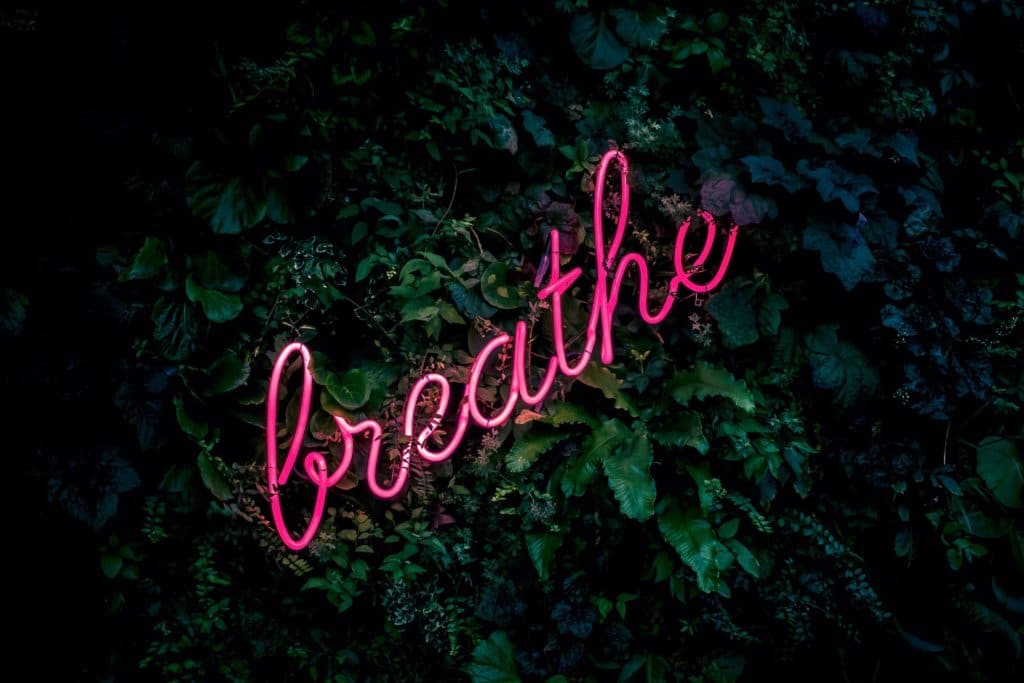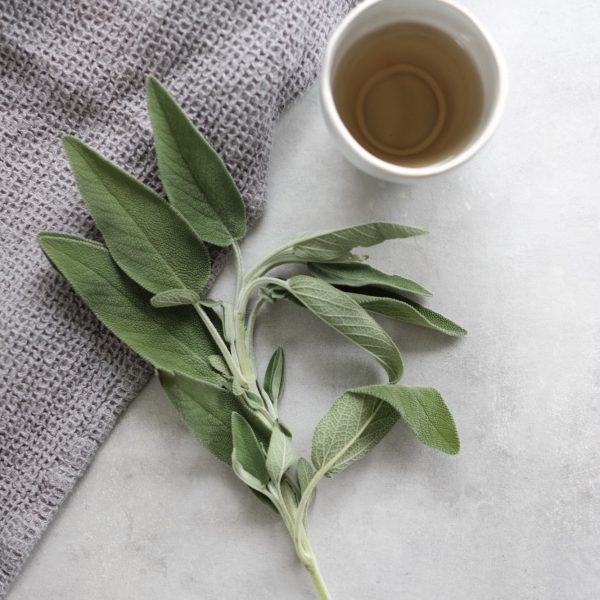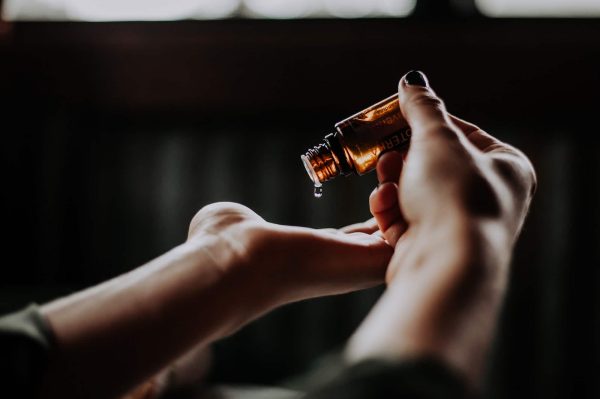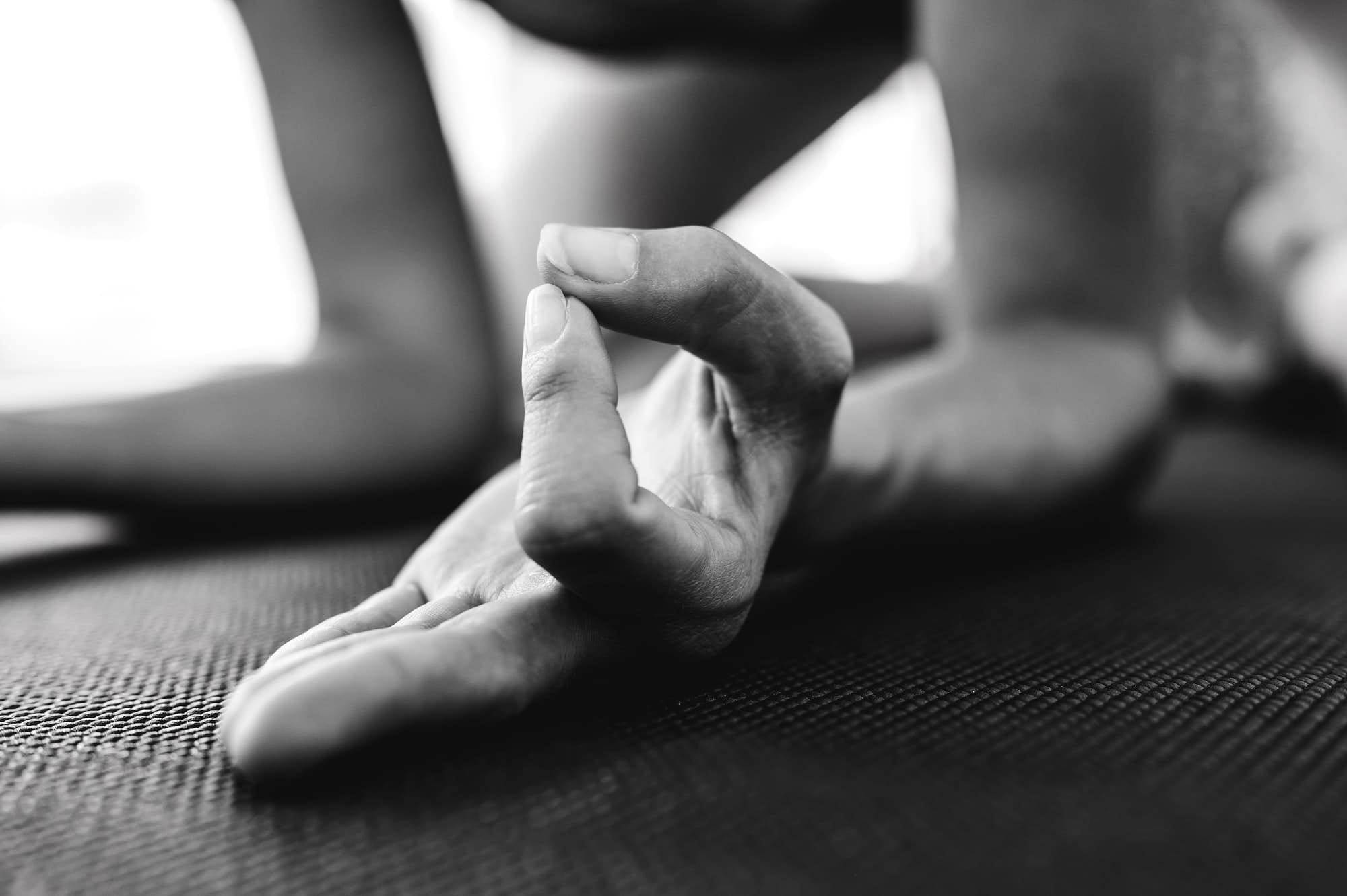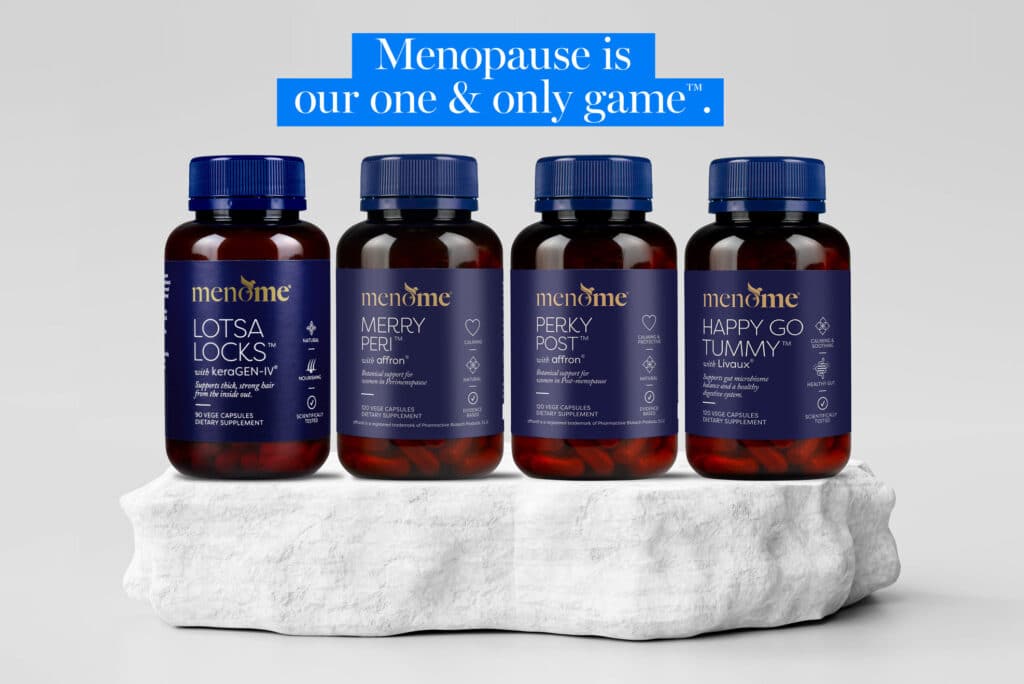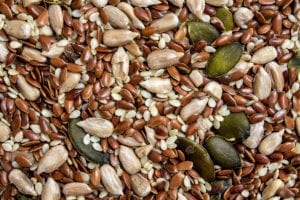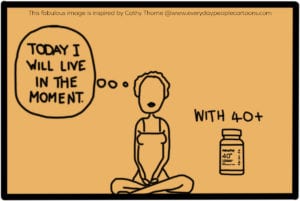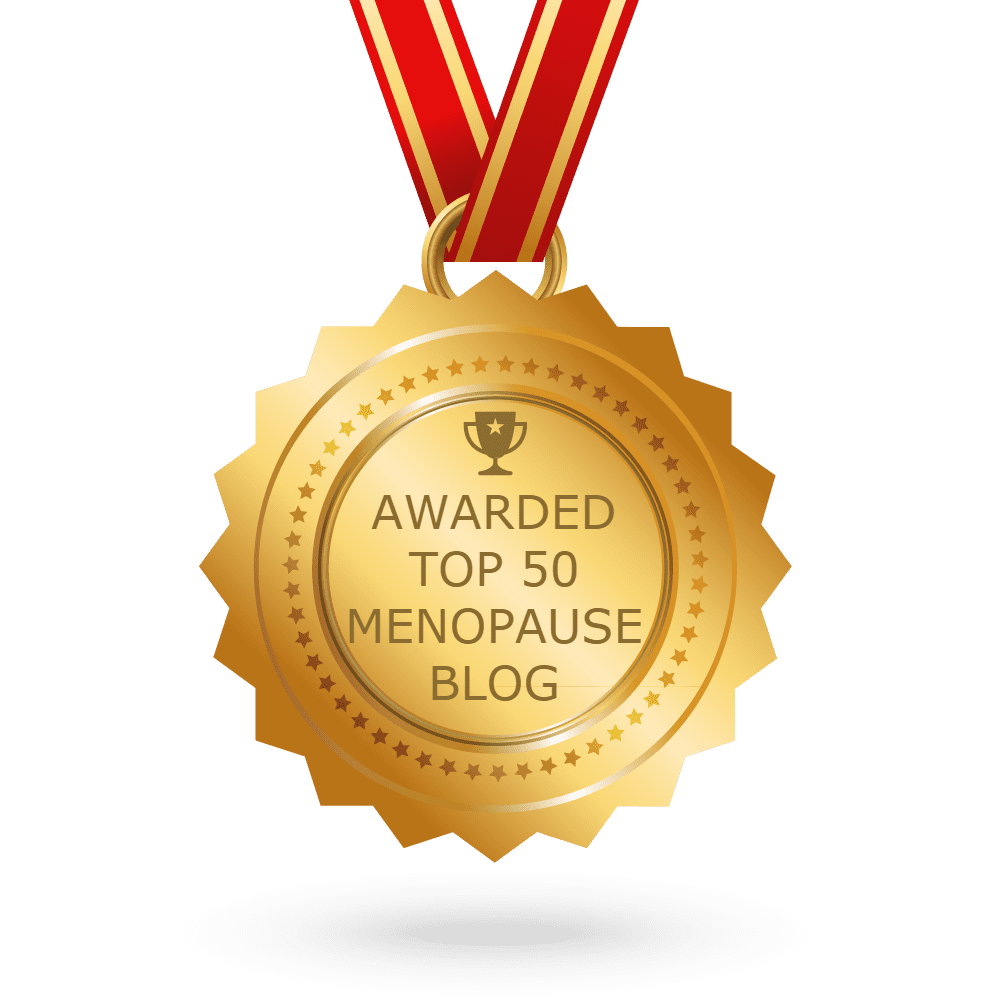Are there menopause remedies that you can concoct in the comfort of your own home?
Absolutely. In fact, several natural remedies may help ease menopause symptoms. So – happy days!
The key to effective DIY menopause remedies is arming yourself with evidence-based information and a little experimentation.
There’s no silver bullet. But when used together, these tools can make a noticeable difference to how you feel.
5 Menopause Remedies You Can Do At Home
1. Breath Work
Have you noticed more people talking about breath work lately? It’s making a major comeback – and for good reason.
Paced breathing – slow, deep diaphragmatic breathing – has proven benefits in perimenopause and post-menopause.
In one study published in Menopause, women who practised paced breathing twice daily saw reduced hot flushes.
What’s more, participants reported it was easy to do.
How to do it:
- Inhale slowly through your nose for 4 seconds – slowing the pace by taking one breath every 10-12 seconds.
- Exhale gently through your mouth for 6-8 seconds.
- Ensure you breathe from your belly and that your exhale is longer than your inhale.
- Continue for 15 minutes, twice daily.
2. Sage Tea
This classic kitchen herb is also a time-honoured menopause remedy. The Latin name is Salvia officinalis.
Sage has antioxidant, anti-inflammatory and anti-hidrotic (sweat-reducing) properties.
Several studies link sage with reduced hot flushes and anxiety, better bone health and improved mood and also anxiety. As an added bonus, animal research showed sage leaves may be helpful for bone resorption.
Reference: Sage extract and hot flushes
Reference: Sage and bone resorption
Indeed, we use sage in Merry Peri® and Perky Post® because it’s got an illustrious history of use in women’s health.
How to make sage tea:
- Use 1 tbsp dried or 2 tbsp fresh sage.
- Pop it into a sieve insert in your teapot or a tea diffuser.
- Pour over boiling water.
- Steep for approximately 10 minutes.
Tip: Less is more, so opt for up to three cups a day
3. Essential Oils
Used for centuries, essential oils have a wide range of emotional and physical uses. According to Absolute Essential, they are “concentrated substances extracted from the flowers, stems, roots, bark, leaves or seeds of a plant. Furthermore, when oils are extracted with care, their life force is maintained and can be recognised by human biology.”
They’re absorbed through your skin and inhaled into your bloodstream via the olfactory system.
Some top essential oils for menopause:
– Clary Sage: May ease hot flushes and balance cortisol
– Lavender: Shown to reduce anxiety and improve sleep
– Bergamot & Geranium: Uplifting, calming, sexual function and hormone-supportive 5 6
Also:
– Citrus: Helps with alertness, reducing belly fat and improving body image. 7
– Neroli: Supports stress, sexual desire and confidence.
Reference: Clary sage and cortisol
Reference: Lavender and hot flushes
It’s always best to consult with a qualified professional before using essential oils, as they are a complex science.
How to use essential oils:
- Add a few drops to an ultrasonic diffuser (preferably ceramic) with water. Don’t burn the oils in a conventional candle burner unless adding water, as they lose any therapeutic value.
- Pop some essential oils into your palms, rub them together and inhale to reap the full aromatherapy benefits.
- Use in a roll-on bottle mixed with a carrier oil. This way, it doubles as a fragrance and extends the effectiveness of the essential oils as they are volatile and evaporate quickly. Preferably use a neutral carrier oil such as coconut, olive or jojoba that won’t change the aroma.
- Combine a couple of drops of essential oils mixed with carrier oil to the soles of your feet, wrists or side of your neck. As a result, you’ll reap immediate benefits in accordance with your reflexology point and energy parts of your body.
- Spritz your linen with a few drops of essential oils.
- Add a couple of drops of relaxing lavender essential oil and Epsom salt. This will prepare you for a blissful pre-bed, detoxifying, hormone-rebalancing experience. Ensure you do not stay in any longer than 15 minutes as after this time you might reabsorb your toxins.
- One of our lovely ladies, Toni, adds essential oils to a tissue and pops them in her bra. She finds it very helpful. Whether it’s to uplift or unwind! (Thanks Toni!)
Note: Always dilute properly and check safety guidelines for pets and children.

Absolute Essential have developed the Mother & Child Safe Symbol for their products. This is an assurance of optimum safety for your little ones, so look out for that if you’re unsure.
4. Essential Oils
The fourth of our DIY menopause remedies is salty baths. Specifically, Epsom salt, or magnesium sulphate, which is believed to soothe tired muscles and support detoxification.
The research is a bit thin, but we do know an Epsom salt bath feels ‘silkier’ than a standard bath. What’s more, it’s blissful! Add a few drops of a high-quality essential oil for de-stressing, designated me-time and sleep. Finally, before you drift off… add a carrier oil to make it all the merrier…
Fun fact: Epsom salt is magnesium sulphate and was named after the town of Epsom in England in the 1600s. You can read the story here.
Did you know? Many people are deficient in magnesium.
Many people are deficient in magnesium, a condition known as hypomagnesemia. Hypomagnesemia can be associated with high stress levels, rising blood pressure, and blood sugar imbalance. Conditions such as headache, fibromyalgia, arthritis and chronic fatigue can also be attributed to hypomagnesemia. For this reason, it’s a good idea to eat magnesium-rich foods like leafy and cruciferous greens, dark chocolate (over 70%), nuts and seeds.
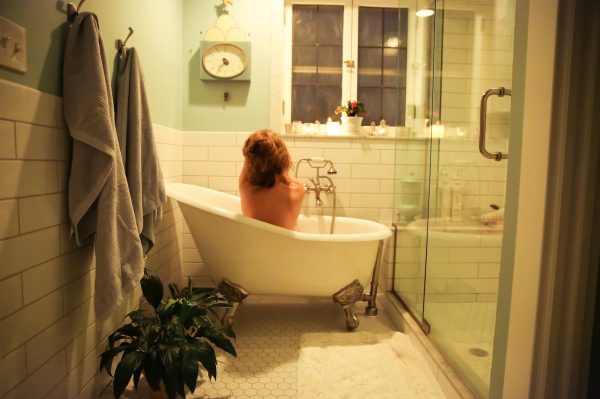
How to draw an Epsom salt bath:
- Fill your tub with warm water (room temperature for soaking).
- Add 1-2 cups of Epsom salt and one tablespoon of coconut or other preferred carrier oil.
- Mix in a few drops of a relaxing essential oil such as lavender or clary sage.
- Soak for 15-20 minutes (no more!)
5. Yoga
Yoga can reduce stress, improve flexibility and support hormone levels in midlife.
And the science is in on this time-honoured practice. In fact, this study showed it may help boost estrogen levels in post-menopausal women. While this research explored the effects of yoga and sleep in women in midlife.
Getting started
If you’ve never taken part in a yoga sequence, it can seem daunting, but it’s not only about seemingly impossible poses. Leave that for the masters and long-time devotees.
You don’t need to be a pro. Begin with gentle flows.
You can easily practise at home. Simply find yourself a space, roll out your mat and find a YouTube yoga channel that works for you. We recommend Yoga With Adriene.
At MenoMe®, we walk the menopause walk. Here’s what’s in our relief kit:
- Merry Peri®, Perky Post®®
- The 7 Pillars For Your Best Menopause
- Eating more phytoestrogens (moderate if overweight). Click here for a free list
- 2 tblsp of freshly ground flaxseeds per day.
- Daily Movement
- Breath Work
- Salty Baths
- Essential Oils
- Sage Tea
- Yoga
We hope these home remedies help you build your own feel-good routine.
Main photo by Fabian Moller @ Unsplash
